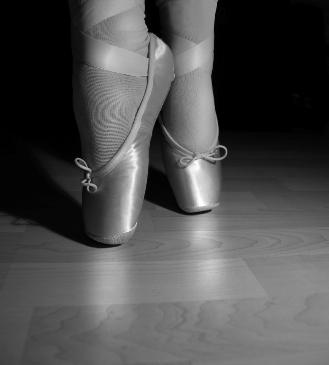
Knowing the history of ballet allows you to understand the background of our society's most cherished dance form.
The Early History of Ballet
To put it simply, ballet is a formal form of dance which finds its roots in the courts of the Italian Renaissance. The art form went on to be developed in Russia and France, and these countries were the first to present it as an avenue of public entertainment. Even the world "ballet" comes from the French, and was then adopted by the English during the 17th century. Before the French term was coined, it finds its name roots in the Italian world "balletto", which is a variation of the word "ballo," or "dance." Going back even further, you can find the basis of the word in the Latin "ballere," which means "to dance."
All of this dry jargon aside, the art of ballet quickly caught on as a History (beautiful expression of both art and physical ability), and all of Europe began to embrace it. By the time it traveled over to the West, three distinct forms had come into existence - classical, neoclassical and contemporary.
The Ballet Russes of Russia is often credited as being the first successful ballet company, and the discipline has continued to be influenced by folk dance and other local styles wherever it happens to be performed. This is one reason for the split into three unique styles, as it was impossible and quite possibly disloyal to forbid the evolution of dance for the sake of preserving one single form.
Below you will find a brief explanation of these three types, as well as how each style is enjoyed today.
Classical Ballet
The oldest and most formal of all ballet styles, classical ballet utilizes the traditional ballet techniques of those early years in its studios all over the world today. This is the ballet of the Russians, Italians and French, and all variations found in classical style are rooted in the original French technique.
There are seven different variants in which one can train when pursuing a career in classical ballet, however you will most likely find a teaching of the Royal method or the Checchetti method when you visit a modern ballet studio.
Formal ballet often requires a particular style of dress, usually consisting of leotard, tights, a wrap skirt for women, and shoes in the shades of white, black or pink. Tutus were developed early on for performance, and as a female progresses in dance, she will eventually begin to dance "en pointe." Traditionally, this is taught around the age of 12 or 13, but it all depends upon the strength of the student and some cultures start dancers out en pointe much younger or older than this.
Classical ballet terminology has been overall preserved throughout the world, making it easy for a classical dancer to travel to far off places and still communicate efficiently with choreographers and fellow dancers. Elite dancers will have learned the roots and phrases of very early ballet terminology, and it continues to be vital today.
Classical ballet leaves little room for creative expression, as its stylings are rigid and premeditated. However, this form of the dance continues to be popular today, especially with youngsters just beginning their dance careers.
Neoclassical Ballet
Neoclassical ballet, much like its grandchild contemporary ballet, finds its roots in classical ballet but allows for a more free range series of movements. It was developed in the early 20th century, and sticks very closely to the Russian form of classical ballet, however it oftentimes adapts the classic terminology to allow for more impressive steps. Neoclassical ballet is also much less theatrical and "showy" than its originator, and while classical ballet can often be compared to a formal night out at the opera, neoclassical is presented best in a casual theatre with minimal costuming, lighting and sets.
Contemporary Ballet
Contemporary ballet was influenced first by classical ballet, but then by modern dance. It holds onto the pointe work derived from the classic teachings, however it adopts a greater range of movement and relaxed steps not found in the strict discipline of old school ballet technique.
George Balanchine is credited as the founder of contemporary ballet, and Mikhail Baryshnikov is a shining example of someone who carved an entire career out of this unique style. He briefly studied under Balanchine, and various modern dance geniuses such as Twyla Tharp also came alongside to further develop the style known as contemporary ballet today.
The world-renowned American Ballet Theatre includes an academy which teaches contemporary ballet, and this is the form of the classic dance that repeatedly makes history today for future generations to embrace.







